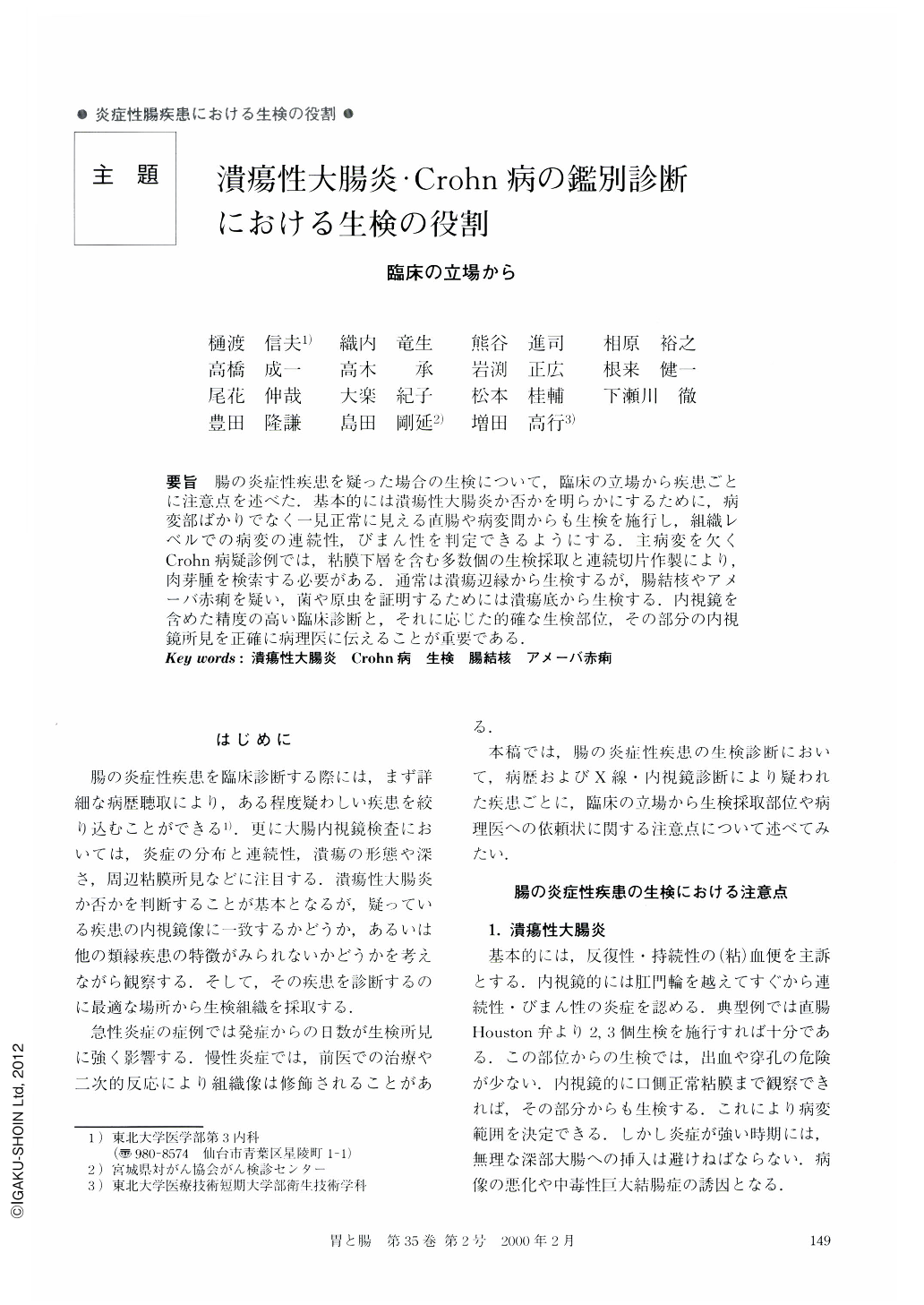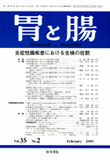Japanese
English
- 有料閲覧
- Abstract 文献概要
- 1ページ目 Look Inside
要旨 腸の炎症性疾患を疑った場合の生検について,臨床の立場から疾患ごとに注意点を述べた.基本的には潰瘍性大腸炎か否かを明らかにするために,病変部ばかりでなく一見正常に見える直腸や病変問からも生検を施行し,組織レベルでの病変の連続性,びまん性を判定できるようにする.主病変を欠くCrohn病疑診例では,粘膜下層を含む多数個の生検採取と連続切片作製により,肉芽腫を検索する必要がある.通常は潰瘍辺縁から生検するが,腸結核やアメーバ赤痢を疑い,菌や原虫を証明するためには潰瘍底から生検する.内視鏡を含めた精度の高い臨床診断と,それに応じた的確な生検部位,その部分の内視鏡所見を正確に病理医に伝えることが重要である.
Some essential points to keep in mind were mentioned when biopsy was performed for distinguishing inflammatory diseases of the intestine. For cases with typical ulcerative colitis, biopsy specimens should be obtained from Houston's valve and proximal normalappearing mucosa beyond the active lesion, if possible. If a patient were diagnosed as having suspected ulcerative colitis clinically and his lesions appear to be segmental or discontinuous, biopsy should be carried out from normal-appearing mucosa of the rectum and between active lesions. Histological examination is then made to see if the lesions are continuous or not. For suspected Crohn's cases without cobblestoning or longitudinal ulcers, it is important to get multiple specimens including submucosa and make serial sections in ordor to detect the presence of non-caseating granulomas. For the purpose of detection of tubercle bacilli or Entamoeba histolytica, specimens should be obtained from the white-coated ulcers.
It is important for making precise clinical diagnosis, to obtain biopsy specimens from the appropriate points and give accurate data to pathologists.

Copyright © 2000, Igaku-Shoin Ltd. All rights reserved.


